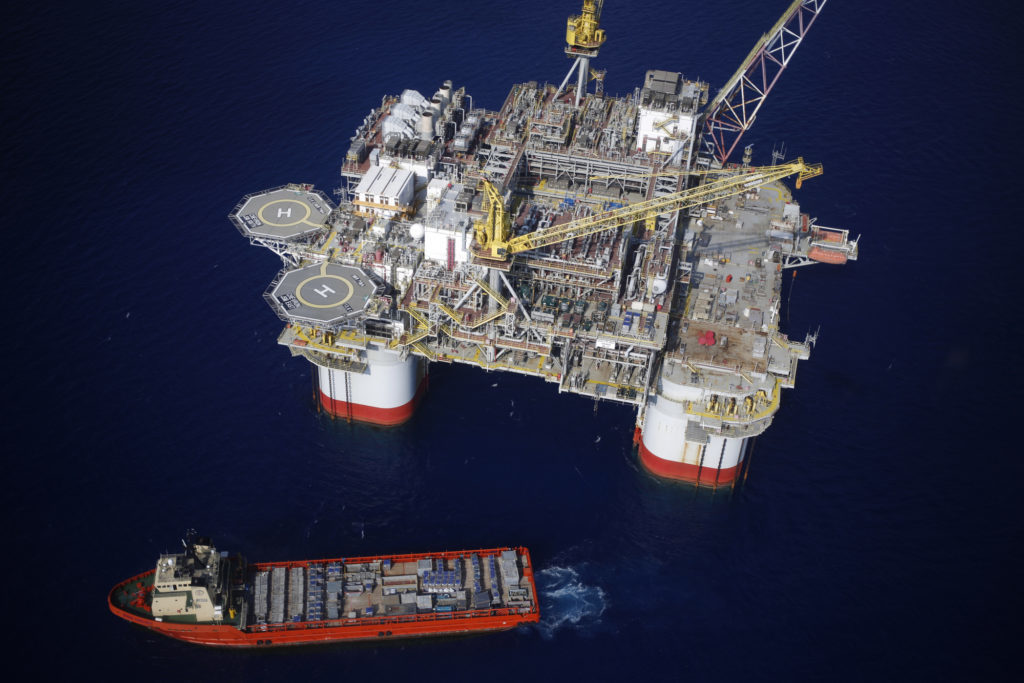
WTI crude held gains near $66 a barrel as investors assessed signs of slowing growth in U.S. crude production due to a pipeline crunch against ongoing concerns over a trade war between the world’s biggest economies.
Futures in New York were little changed after a 0.7 percent advance on Friday. While working oil rigs in the U.S. remained at the highest level in more than three years, the rig count has grown only by 10 since late May. Persisting pipeline bottlenecks and rising costs are delaying investment decisions in the Permian Basin, with explorers forced to sell output at a discount to benchmark prices. Meanwhile, traders continued to weigh the outlook for the trade war between American and China as they await the resumption of talks.
Oil has fallen about 11 percent from the highs of late June as a trade war between the U.S. and China and turmoil in Turkey threatens global economic growth and energy demand. Rising supplies have also weighed on prices, with U.S. output near a record-high and after the Organization of Petroleum Exporting Countries and allies boosted production in July.
“Growth in U.S. crude production is expected to slow down until new pipelines are built in 2019,” Mikiko Tate, a senior analyst at Sumitomo Corporation Global Research Co., said by phone from Tokyo. U.S.-China trade tensions and the Turkish economic crisis “remains a concern. While signs of their impact haven’t yet appeared, investors are increasingly becoming cautious.”
West Texas Intermediate crude for September delivery traded at $65.63 a barrel on the New York Mercantile Exchange, down 28 cents, at 12:22 p.m. in Tokyo. The contract climbed 45 cents to $65.91 on Friday. Total volume traded was about 42 percent below the 100-day average.
Brent for October traded at $71.49 a barrel on the London-based ICE Futures Europe exchange, down 34 cents. The contract rose 40 cents to $71.83 on Friday. The global benchmark crude traded at a $6.57 premium to WTI for the same month.
Futures for December delivery fell 1.6 percent to 488.8 yuan a barrel on the Shanghai International Energy Exchange. The contract dropped 0.2 percent on Friday.
Pipeline jams and soaring costs are already taking their toll on explorers, as President Donald Trump’s tariffs on foreign steel add costs to build pipelines. Cabot Oil & Gas Corp. has been pushed to stop spending money on exploring the Permian, while ConocoPhillips is saying it’s considering moving some rigs from the Permian to the less crowded Eagle Ford region of South Texas.
The dearth of spare pipeline capacity won’t ease until early 2020, Wells Fargo analysts led by Michael Blum said in late July. They previously forecast the Permian bottleneck would begin to clear in the third quarter of 2019.
Adding to speculation that the U.S. shale boom which had weighed on prices is easing is signs of slowing drilling activity. Rigs searching for oil in the U.S. were unchanged at 869, according to data from Baker Hughes on Friday. While the rig count in the Permian Basin increased by 1 to 486, the highest since Jan. 2015, the growth has slowed down in recent months.
Other oil-market news:
Wild swings in the yuan and punitive storage costs are making oil traders think twice about a bet on China’s fledgling crude futures that looks highly lucrative on paper.